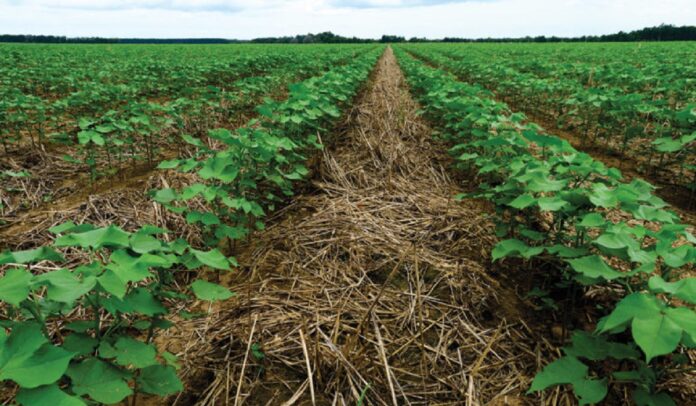Cover crops are crops planted primarily to manage soil erosion, soil fertility, soil quality, water, weeds, pests, diseases, biodiversity and wildlife in an agroecosystem (Lu et al. 2000).
In sustainable agriculture, you cannot avoid the practice of cover cropping and its benefits. We take time, in this post, to elaborate the importance and encourage farmers, in the face of climate change, to consider the advantages and adopt the practice of cover cropping.
We give you 10 reasons to start using cover crops.
1. Prevent erosion
In a sustainable agricultural practice, you must avoid bare soil surfaces. Land that has been exposed stands a greater risk of erosion by water runoff or wind. This removes the rich topsoil that supports plants growth. Moreover, the soil underneath the topsoil makes it much harder for planting. Cover crops serve as a blanket the reduce impact of rainwater on the soil and slow down its movement to prevent washing away the soil. The Wind, likewise, is not able to carry soil particle with the cover crop.
2. Improve Soil Structure
Preventing the soil from erosion definitely, helps maintain soil structure. The roots activities of the cover crops create passages and pores spaces that allow water infiltration into the soil. The activities of microorganisms contribute to the rich structure of the soil. Also, the presence of cover crops is a good environment for insects and other microorganisms activities.
Read also: Soil Conservation : Ways to maintain soil for sustainable production
3. Add Organic matter
A Cover crop adds organic matter to the soil when living or when slashed and allowed on the field. Organic matter improves soil nutrients, soil structure, it helps water retention and increases microorganisms activity. They are natural mulch and compost.
4. Suppress Weeds
Cover crop forms an effective shade that prevents weeds from photosynthesis and growth. Furthermore, when you slash the cover crop and allow them on the field, they act more as conventional mulch, making it difficult for weeds and weeds seeds to grow.
5. Moisture conservation
The use of cover crops is a very effective way of conserving water for plants’ use. The cover protects the soil and reduces the rate of evaporation of water from the soil. More so, cover crops can send down a deep root that brings up moisture from the lower soil profile.
6. Soil Nutrients addition
Leguminous cover crops are known to fix nitrogen in the soil. They have nodules on their roots that provide a habitat for nitrogen-fixing bacteria. The nitrogen-rich nodules of these cover crops are released into the soil and available for other plants’ use when the cover crops die. It is a good practice to plant food crops in succession with the leguminous cover crop to benefit from the nutrients in the soil. Leguminous cover crops include cowpeas and the Mucuna.
Read also: 5 need-to-knows about Conservation Agriculture (CA) and why you must get involved
7. Less Work and less cost
Weed control is one of the major and vital activities in cropping. With the presence of cover crops, you save your money and time on this activity. As much as the cover last, weed control is very effective. Moreover, the nutrients that the cover crops provide also reduce the need for extra nutrient boosters. No need for composting and mulching.
8. Source of food
Farmers who grow cowpeas as cover crops also stand to harvest cowpea in addition to the many benefits. Intercropping it with maize or cassava is becoming popular with local farmers. We experienced these benefits on our Maize/Cowpea field last year.
9. Biodiversity
The growing of cover crops improves biodiversity. Different species of plant with their characteristics have ways they interact with other plants, like providing shade or fixing nitrogen. Such environment attracts wildlife, provides habitat and even serves as feeding grounds for insects attracted by the plants. Besides, some organisms also seek protection from predators or certain elements. Insects that the cover attracts, may serve as pollinators on your site and help propagate the plants. It creates an enabling environment for biological control of certain pests.
Srinivasa Kunuthur summarises it in his comment that “The crop residues of diverse crops left over after harvest serves as balanced, nutritious and holistic food for soil sheltered microorganisms of diverse species.“
Read also: Change to Conservation Agriculture : Increase yields and improve farmlands
10. Sustainable
Growing cover crops and the benefits that come with will ensure, for a longer period of time, that your soil is good and fertile for food production with very minimal disturbance to the natural environment. This helps to keep your soil healthy and natural.
In summary
Cover cropping is the sure way to maintain fertile and stable soil, production after production.


